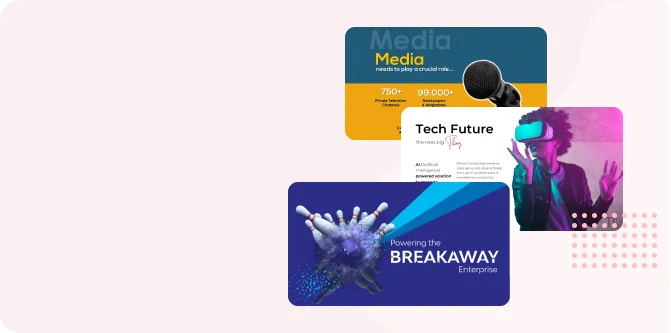Marketers and academicians all over the world have found out that our brains are hardwired to store and process information in the form of stories. When we hear the ‘once upon a time’ phrase, our minds are very likely to get transported to an imaginary scene that the narrator is trying to take us to. The reason why stories are so irresistible to the human mind is that they activate our imagination, giving us no other choice but to head in the direction of the mental movies created in our brains. Storytelling methods like the ones mentioned below are indispensable tools for business leaders and presenters alike. You can incorporate them in infographics, videos, pitch decks and static images. Let’s look at the several storytelling techniques that can make your next presentations unforgettable.
Make your story immersive
A well-told story is a story that your audience will retain in their minds for years to come. With basic slides that have large images and graphics, you can weave a captivating tale. Make sure every word and image presented helps to create a clear mental picture. Let the visuals supplement your story than letting it repeat what has already been saying. A great way to immerse your audience in your story is by providing sensory details that will allow them to hear, see, feel and smell the different kinds of stimuli in your presentation.
Talk about a personal story
There are really few things that are as captivating as personal stories, especially those of triumph over terrible adversities. Christopher Booker in his book- The Seven Basic Plots says that there are only 7 basic story plots that have a universal appeal. The hero plot, rags to riches tale, the quest for a treasure and the journey of a hero who comes back a changed person. Most PowerPoint presentations have these plots.
Create suspense
Everybody who reads books and watches movies knows that a good story has a conflict and a plot. These two elements together are what makes a good presentation a ride that keeps viewers and listeners at the edge of their seats thinking about what comes next. Several devices can create suspense in your story. A good way is to tell the story chronologically and then build-up to the conclusion. Another way to do it is by telling the story and then build it up to a climactic conclusion. A great way to do this again is by throwing the listener right in the centre of the action and then going back in time to talk about how it all occurred. Your aim should be to engage the audience with powerful visual tales.
Bring your characters to life
All characters are the heart of your story. Their misfortunes and fortunes are what makes people rejoice, laugh and cry. The most successful stories were the ones that had three-dimensional characters and were easy to identify along with having an uncommon characteristic. Your characters should be detailed and well thought out.
Show. Don’t tell
Instead of telling your audiences about the occurrences of certain events happening in a story, it is best to show it to them by transporting them to that scene. Whenever you deliver a story, try to show a scene-by-scene construction of it and events and use dialogue instead of telling the story through your perspective.
The climax is your S.T.A.R moment
S.T.A.R stands for ‘Something They’ll Always Remember’. This is a point in your presentation that’s so dramatic that the audience will be talking about it for weeks. Nancy Duarte, presentation expert in her book ‘Resonate’ says that this moment can be in the form of shocking statistics, provocative images or dramatization. In a 2009 presentation by Bill Gates, where he spoke about increasing the investment for removing malaria, he gave statistics to showcase how serious the issue was. His S.T.A.R moment came when he shocked the room by opening a jar full of mosquitoes and said ‘There’s no reason why only poor people should have to go through this experience.’
Always end presentations with a positive takeaway
The most effective presentations don’t just have a conflict and climax but also a very positive resolution. On the way to triumph, most characters in stories get what is called a ‘spark’, that is a key piece of wisdom/advice that helped them overcome their difficulties and change for the better. This key takeaway message is then packed in a short memorable sound bite or phrase that can then become viral on social media platforms.
Key takeaways
Always remember that a successful talk is a miracle. People see things very differently after that. Visual slides are not the only way to achieve that. Make sure your visuals are interwoven with hard-hitting stories to make your presentations immersive, impactful and iconic.



